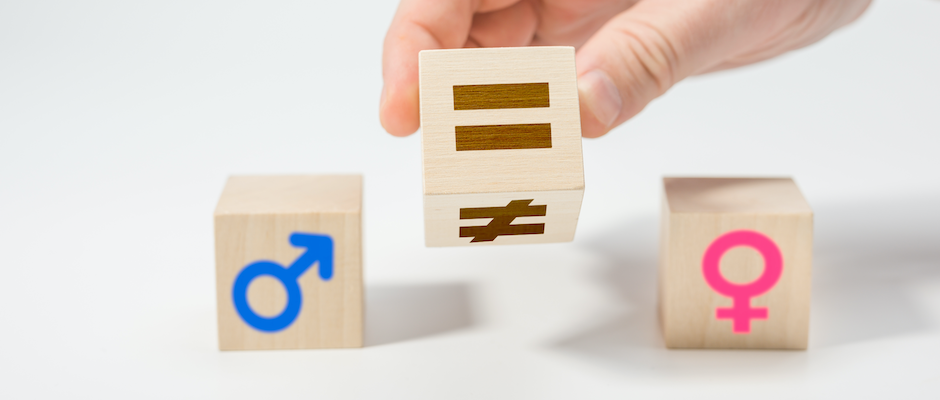
Studies have shown that around the globe, women have a longer life expectancy than men. However, studies also suggest that women spend less of their lives in good health. As Amanda Ruggeri writes in BBC Future, “women are less likely to have their pain treated, their symptoms taken seriously, or to be given a diagnosis than men.”
Research associated with gender bias in medicine has been dubbed the gender health gap and it could have serious implications for endometriosis patients. When you visit your doctor’s office for an appointment, you expect to be listened to and taken seriously regardless of your age, race, sexuality, and gender. This is especially true for endometriosis patients, whose pain is often dismissed and misdiagnosed.
Taylor first started seeing a doctor for the severe pain and fatigue she was feeling periodically when she was 21 years old. 15 years later, she now realizes she’s experienced some of the most common side effects associated with endometriosis. “It took eight years, three doctors, and two procedures before I was finally diagnosed,” Taylor explains, “I know getting a diagnosis didn’t cure me but it did make me feel heard and validated.”
Taylor wasn’t alone in getting a delayed diagnosis. Research conducted by the BBC found that it takes an average of seven and a half years to be diagnosed with the condition. Further research into people’s experience of diagnosis found that 58% of people visited their doctor more than 10 times before being diagnosed with endometriosis, 43% went to the hospital over five times, and 53% said they’d had to go to the emergency room.
Experts have suggested that the statistics speak for themselves and, from medical research to care, healthcare could be pitted against women. Studies have found that women are less likely to feel listened to and taken seriously, and are assumed to have a higher pain threshold. One of the main side effects of endometriosis is chronic pain, and because endometriosis patients don’t receive a definitive diagnosis until they’ve had laparoscopic surgery, not having their pain believed can be particularly harmful. “When you keep being turned away by the people you think will help you manage your pain, it can be the loneliest feeling,” says Taylor.
What is the gender health gap?
Activists have used the term ‘gender health gap’ to bring together evidence that would suggest that your gender has a bearing on your experience with doctors and the healthcare you receive. Studies that point out that women are 25% less likely than men to receive pain relief have been used to back up the notion of gender bias in medicine.
In a study published in 2018, entitled “Brave Men” and “Emotional Women”, researchers concluded that pain experienced by women was often described as medically inexplicable, as there was often no visible cause for their pain. As a result, healthcare professionals often attributed the pain to a psychological rather than physical cause. This was due to the absence of any visible or diagnostic evidence of illness.
Taylor spent three years under the medical care of a doctor who offered her over-the-counter pain relief in order to cope with debilitating chronic pain associated with endometriosis. “I was missing school. The pain meant I didn’t want to see my friends or date anyone new. It completely killed my sex life. And when I sat in my doctor’s surgery, in tears and totally at the end of my tether, it was like he was as clueless as I was,” she says, “It’s not that I think he didn’t care. I just know he had no idea what I was going through.”
How does the gender health gap link to endometriosis?
In the United States, the National Institutes of Health (NIH) didn’t require medical research to include women until 1993. The Guardian outlined that people excused this omission by arguing that women’s bodies were more complex due to hormonal changes. This may explain why there’s such a huge gap in research and understanding when it comes to conditions like endometriosis.
According to Endometriosis UK, 176 million people worldwide have endometriosis, making it one of the most common gynecological conditions. The pandemic has only exacerbated endometriosis treatment delays and diagnosis periods. “It's not clear why there appears to be a disparity between the treatment of chronic pain between the genders,” says Dr. Kathryn Basford, GP of Superdrug, “This may be due to the perception of a pain threshold or a lack of understanding of the conditions that cause chronic pain in women. More research needs to be done, and more should be done to raise awareness of this among healthcare professionals.”
Experts have pointed out that one of the reasons that medical treatment favors men is because research has centered around the male experience for decades. As Ruggeri explains, female bodies were so invisible from medical research over the last few decades. Regine Douthard, MD, MPH, senior program officer with NIH’s Office of Research on Women’s Health told Well and Good, “Many clinical trials ran under an unspoken assumption that the only difference between women and men was their sexual and reproductive organs.” However, the medical needs between the sexes are different and for a long time, it’s led to a severe lack of research into conditions like endometriosis.
Studies have found that in addition to medical professionals assuming that women have higher pain thresholds, there is also an assumption that they are more emotionally unstable. Research published in 2001 found that when people who identified as women came to their doctors with legitimate concerns of chronic pain, they were more likely to be described as "emotional", and their pain to be "psychogenic", and "not real" by their medical expert. This is especially harmful for endometriosis patients who already face long diagnosis waiting periods and may not feel like they’re listened to.
Chronic pain is a key symptom associated with endometriosis. It’s been found that living with chronic pain will also make you more susceptible to experience anxiety and depression. “I think society as a whole is very poor at acknowledging pain,” Lone Hummelshoj, chief executive of the World Endometriosis Society told Bustle. “Too many assume that pain with your period is normal and that it is part of [menstruating] but that is absolutely not the case. If period pain interferes with school, work, and social activities, then it is not normal.”
“It wasn’t until I researched an endometriosis expert and pushed to get an appointment that I finally felt listened to,” says Taylor, “I was sick of talking about period cramps in my doctor’s consultations when I knew that they had nothing to do with what I was feeling. I wasn’t overreacting. This wasn’t normal.”
The gender health gap, especially as it relates to endometriosis, has historical roots in medical practice. Endometriosis.org explains that pain associated with endometriosis is often dismissed because “‘women’s problems’ perplexed nineteenth-century doctors, who saw them as indicative of unstable and delicate psychological constitutions. Even though attitudes [...] have improved during the twentieth century, some of the old beliefs still linger unconsciously, and affect the medical profession’s attitudes towards complaints including period pain.”
Dr. Simran Deo, who practices at Zava, highlights that having an open conversation with your doctor can help you understand what they’re looking for and also give you peace of mind that they understand your condition. “Often there are reasons for why it may appear that your pain isn’t being taken seriously,” she says. “In most cases, it may be because the health professional is ruling out all other more serious causes of your symptoms before they can attribute them to endometriosis. This can understandably be difficult, so if the pain really is getting you down, do voice this to your doctor so they can give you adequate pain relief whilst investigations continue.” You should never be left to live in pain.
How to tackle the gender health gap
In 2014, Brigham and Women’s hospital in the U.S. said that medical developments that look into the way conditions are treated and diagnosed “routinely fail to consider the crucial impact of sex and gender. This happens in the earliest stages of research when females are excluded from animal and human studies or the sex of the animals isn’t stated in the published results.” This would suggest that in order to tackle the gender health gap and improve medical understanding of conditions like endometriosis, medical research that includes and prioritizes the experiences of people who identify as women need to take place in higher numbers.
The lack of medical research on endometriosis leads to less medical education on the disease, and can result in serious delays in the period of time it takes to receive an endometriosis diagnosis and how much your doctors understand about the condition. “From speaking to other people with endometriosis online I recognize my experience as the norm,” says Taylor, “but that’s so wrong. I lived in pain for years and on many occasions, I was in a medical setting and felt like the only person clued up on what endometriosis actually is.”
Dr. Deo explains that if you’re in a situation where you feel that your pain isn’t being understood, “always speak to your doctor, but if you feel that you aren’t being heard, seeking support from other people who may have had similar experiences, such as an endometriosis support group.”
Over the last decade, organizations like the Endometriosis Foundation of America have worked tirelessly to support research that highlights the experience of people living with endometriosis. It’s only over the last few decades that the medical community as a whole has started to build a greater understanding of how endometriosis impacts women’s lives. Wider medical research needs to account for the history of sexism in medical testing; this, in combination with more medical professionals being educated about endometriosis in their schooling and training, will lead to earlier diagnosis and proper treatment for endometriosis patients.









